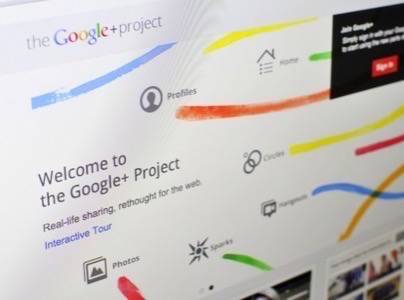
The Wall Street Journal has revived rumors about Google launching a cloud storage service called Drive. The comparison everybody wants to make is to Dropbox. The thinking is that Google will challenge everyone’s favorite start-up by releasing a native desktop and mobile Drive app with the same syncing features Dropbox users know and love.

Google Drive rumors have been around for many years, and they’ve always conformed to the understanding of “The Cloud” that has prevailed at the time. If it’s not like Apple’s iCloud, which is integrated into Apple’s devices, then it must be like Dropbox, which lives on the Web but syncs through a client. But think outside the box for a minute. Google has new and unique cloud services that Dropbox and Apple don’t. There’s room for a third, stand-out option here.
Google Docs
Google already has a browser-based file system, Google Docs. It originated as a sort of word processor in the cloud, but it can actually handle and store many kinds of files, such as PDFs, JPEG images, MPEG audio and video, and it’ll handle pretty much anything containing text. That does make it a pretty compelling stand-in for Dropbox when it comes to simply storing files.
It even has a nice disk drive icon now, after last year’s Google makeovers. Google Drive, indeed:

Are people already using Google Docs as a cloud drive? Spanning, a company that provides backup for Google apps users (not just Google Apps users; free customers, too), took a look into how thousands of people are using it, and it studied their use to better optimize its services. Consequently, it has some insights into Google apps users to share.
Spanning has found that over half of the files in their customers’ Docs accounts were not Google Apps-created. They were PDFs, audio, video, photos and Microsoft Office files. By file size, non-Google files comprised over 85% of the stuff people stored in their Docs accounts.
So, at least for the use case of storing files, lots of people are already using Google Docs instead of Dropbox. What Docs does that Dropbox doesn’t is allow users to create and edit certain kinds of files. If you use Google Docs as your cloud document service, you’re probably using it to make and work on documents, too. That’s more than Dropbox can offer, standing on its own. (We’ll get to apps built on top of Dropbox in a minute.)
Search, plus Your World
There’s a new Google product that didn’t exist last time the Google Drive rumors surfaced. It’s Google. Or rather, it’s Google+. On January 10, Google revealed Search, plus Your World, which threw everybody for a loop. If you don’t understand that Google+ is the user-centric backbone of Google itself now, it doesn’t make sense that this one side of Google search has stuff from this weird social network in it.
While this early stage of Search+ is definitely about putting Google+ in users’ faces, that’s not what the message is. “Your World” does not consist solely of YouTube videos shared on social networks. Google’s personalized search also tries to figure out what a search means to you, so it can return something more meaningful. It’s two modes of search: Global mode searches the indexed Web, and personal mode tailors it to you.

How much more useful would this be if Google’s personalized search had your files in it? If your Google Drive contained your documents and music and other local files, they could show up in your personalized search results. If you couldn’t remember whether you read something online or in a document you downloaded, Search+ could find both. Now we’re giving meaning to the “Your World” part.
Dropbox has search, but it only contains part of what you’re looking for when you search “your world.” It’s more useful as one of many services in a third-party cloud search app like Greplin, which also logs into Google apps and searches across. Google’s new social signals run through all its services now, so if it’s in your Google cloud, Google search will find it, period.
Dropbox Is A Platform. It’ll Be Fine.
Between Docs and Search+, whatever Drive Google eventually ships (whether it’s in a few weeks or another X years) will have lots of unique capabilities that make it a different beast from Dropbox.
That’s exactly the way Dropbox wants it.
Dropbox turned down insane amounts of money from Apple, because it didn’t want to get rolled in as a feature of one integrated system. That’s why iCloud doesn’t work like Dropbox. Apple wanted cloud syncing that was just there, so users don’t have to know where their files are. Developers in the Apple ecosystem can just hook into iCloud. Their applications become Apple-specific. In exchange, they get free marketing in the App Store, and if Apple is feeling generous it features their apps as the App Of The Week or something.

Dropbox said “no” to all that. It wants to be the next Apple or Google, and its valuation seems optimistic about that possibility. Apple’s cloud is totally integrated with its devices, using hardware as the platform. Google’s cloud is integrated with its services, using the Web as a platform. Dropbox is a platform.
Dropbox lets different clients on different systems read and write to it. Dropbox doesn’t have a Google Docs because anyone can build a word processor on top of it. We can build a thousand word processors on top of it, and if they can all read the same file format, they can all work together. Dropbox’s platform ubiquity is what it’s all about, and that’s why Google (and Apple) can’t copy it.
Lead photo: AHMAD FAIZAL YAHYA / Shutterstock.com

















